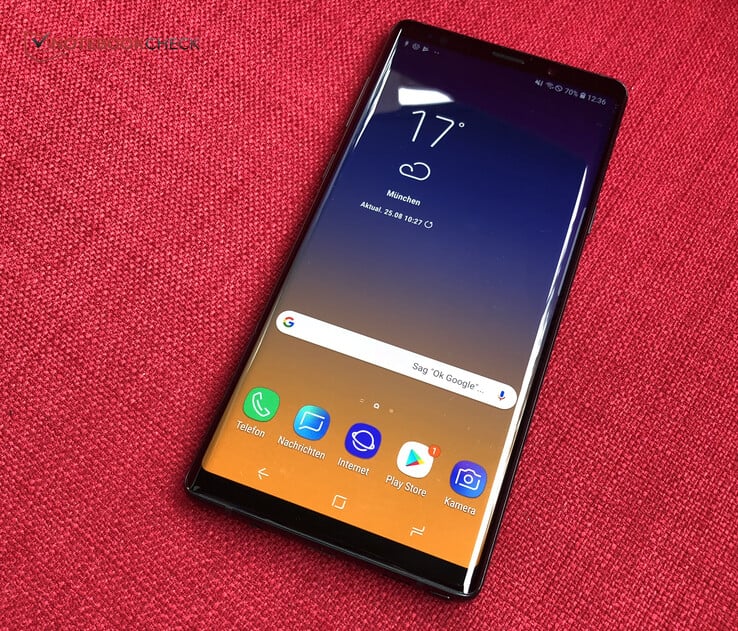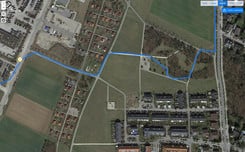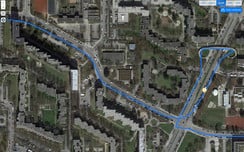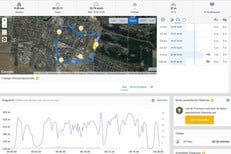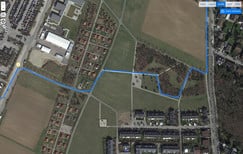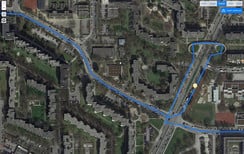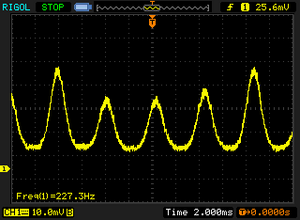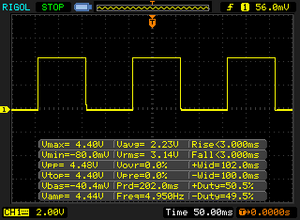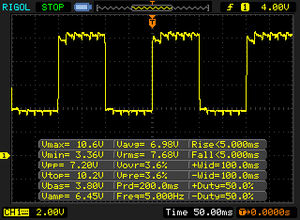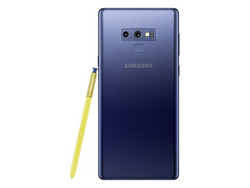Breve Análise do Smartphone Samsung Galaxy Note 9
Os Top 10
» Os Top 10 Portáteis Multimídia
» Os Top 10 Portáteis de Jogos
» Os Top 10 Portáteis Leves para Jogos
» Os Top 10 Portáteis Acessíveis de Escritório/Empresariais
» Os Top 10 Portáteis Premium de Escritório/Empresariais
» Os Top 10 dos Portáteis Workstation
» Os Top 10 Subportáteis
» Os Top 10 Ultrabooks
» Os Top 10 Conversíveis
» Os Top 10 Tablets
» Os Top 10 Smartphones
» A melhores Telas de Portáteis Analisadas Pela Notebookcheck
» Top 10 dos portáteis abaixo dos 500 Euros da Notebookcheck
» Top 10 dos Portáteis abaixo dos 300 Euros
Size Comparison
| |||||||||||||||||||||||||
iluminação: 96 %
iluminação com acumulador: 499 cd/m²
Contraste: ∞:1 (Preto: 0 cd/m²)
ΔE Color 4.62 | 0.5-29.43 Ø4.87
ΔE Greyscale 2.2 | 0.5-98 Ø5.1
144.6% sRGB (Calman 2D)
Gamma: 2.103
| Samsung Galaxy Note 9 Super AMOLED, 2960x1440, 6.4" | Apple iPhone 8 Plus IPS, 1920x1080, 5.5" | HTC U12 Plus Super LCD 6, 2880x1440, 6" | Huawei Mate 10 Pro OLED, 2160x1080, 6" | OnePlus 6 Optic AMOLED, 2280x1080, 6.3" | LG G7 ThinQ IPS, 3120x1440, 6.1" | Samsung Galaxy Note 8 Super AMOLED, 2960x1440, 6.3" | |
|---|---|---|---|---|---|---|---|
| Screen | 30% | 23% | 29% | 10% | 4% | 14% | |
| Brightness middle | 499 | 559 12% | 395 -21% | 629 26% | 430 -14% | 974 95% | 530 6% |
| Brightness | 506 | 538 6% | 402 -21% | 636 26% | 437 -14% | 975 93% | 536 6% |
| Brightness Distribution | 96 | 90 -6% | 90 -6% | 94 -2% | 87 -9% | 96 0% | 93 -3% |
| Black Level * | 0.38 | 0.37 | 0.49 | ||||
| Colorchecker dE 2000 * | 4.62 | 1.3 72% | 1.6 65% | 1.7 63% | 2.3 50% | 5.4 -17% | 2.6 44% |
| Colorchecker dE 2000 max. * | 10.91 | 2.7 75% | 3.4 69% | 3.6 67% | 4.6 58% | 13.1 -20% | 5.1 53% |
| Greyscale dE 2000 * | 2.2 | 1.8 18% | 1.1 50% | 2.4 -9% | 2.4 -9% | 5 -127% | 2.7 -23% |
| Gamma | 2.103 105% | 2.25 98% | 2.14 103% | 2.15 102% | 2.28 96% | 2.31 95% | 2.04 108% |
| CCT | 6115 106% | 6797 96% | 6536 99% | 6337 103% | 6160 106% | 7480 87% | 6206 105% |
| Contrast | 1471 | 1068 | 1988 |
* ... menor é melhor
Cintilação da tela / PWM (modulação por largura de pulso)
| Tela tremeluzindo/PWM detectado | 227 Hz | ||
A luz de fundo da tela pisca em 227 Hz (pior caso, por exemplo, utilizando PWM) . A frequência de 227 Hz é relativamente baixa, portanto, usuários sensíveis provavelmente notarão cintilação e sentirão fadiga ocular na configuração de brilho indicada e abaixo. [pwm_comparison] Em comparação: 53 % de todos os dispositivos testados não usam PWM para escurecer a tela. Se PWM foi detectado, uma média de 8516 (mínimo: 5 - máximo: 343500) Hz foi medida. | |||
Exibir tempos de resposta
| ↔ Tempo de resposta preto para branco | ||
|---|---|---|
| 6 ms ... ascensão ↗ e queda ↘ combinadas | ↗ 3 ms ascensão | |
| ↘ 3 ms queda | ||
| A tela mostra taxas de resposta muito rápidas em nossos testes e deve ser muito adequada para jogos em ritmo acelerado. Em comparação, todos os dispositivos testados variam de 0.1 (mínimo) a 240 (máximo) ms. » 16 % de todos os dispositivos são melhores. Isso significa que o tempo de resposta medido é melhor que a média de todos os dispositivos testados (20.8 ms). | ||
| ↔ Tempo de resposta 50% cinza a 80% cinza | ||
| 10 ms ... ascensão ↗ e queda ↘ combinadas | ↗ 5 ms ascensão | |
| ↘ 5 ms queda | ||
| A tela mostra boas taxas de resposta em nossos testes, mas pode ser muito lenta para jogadores competitivos. Em comparação, todos os dispositivos testados variam de 0.165 (mínimo) a 636 (máximo) ms. » 20 % de todos os dispositivos são melhores. Isso significa que o tempo de resposta medido é melhor que a média de todos os dispositivos testados (32.5 ms). | ||
| AnTuTu v7 - Total Score (classificar por valor) | |
| Samsung Galaxy Note 9 | |
| HTC U12 Plus | |
| Huawei Mate 10 Pro | |
| OnePlus 6 | |
| LG G7 ThinQ | |
| Samsung Galaxy Note 8 | |
| Média Samsung Exynos 9810 (236552 - 250577, n=3) | |
| Basemark ES 3.1 / Metal - offscreen Overall Score (classificar por valor) | |
| Samsung Galaxy Note 9 | |
| Huawei Mate 10 Pro | |
| OnePlus 6 | |
| LG G7 ThinQ | |
| Samsung Galaxy Note 8 | |
| Média Samsung Exynos 9810 (1436 - 1481, n=3) | |
| Média da turma Smartphone (205 - 7616, n=56, últimos 2 anos) | |
| Basemark GPU 1.1 | |
| Vulkan Medium Native (classificar por valor) | |
| Samsung Galaxy Note 9 | |
| Huawei Mate 10 Pro | |
| OnePlus 6 | |
| LG G7 ThinQ | |
| Média Samsung Exynos 9810 (n=1) | |
| 1920x1080 Vulkan Medium Offscreen (classificar por valor) | |
| Samsung Galaxy Note 9 | |
| Huawei Mate 10 Pro | |
| OnePlus 6 | |
| LG G7 ThinQ | |
| Média Samsung Exynos 9810 (n=1) | |
| 1920x1080 OpenGL Medium Offscreen (classificar por valor) | |
| Samsung Galaxy Note 9 | |
| Huawei Mate 10 Pro | |
| OnePlus 6 | |
| LG G7 ThinQ | |
| Média Samsung Exynos 9810 (n=1) | |
| VRMark - Amber Room (classificar por valor) | |
| Samsung Galaxy Note 9 | |
| Huawei Mate 10 Pro | |
| OnePlus 6 | |
| LG G7 ThinQ | |
| Média Samsung Exynos 9810 (n=1) | |
| Média da turma Smartphone (7884 - 10071, n=2, últimos 2 anos) | |
| JetStream 1.1 - Total Score | |
| Apple iPhone 8 Plus | |
| LG G7 ThinQ (Chrome 66) | |
| OnePlus 6 (Chrome 66) | |
| HTC U12 Plus (Chrome 66) | |
| Samsung Galaxy Note 8 (Samsung Browser 6.0) | |
| Média Samsung Exynos 9810 (62.9 - 69.6, n=4) | |
| Samsung Galaxy Note 9 (Chrome 68) | |
| Huawei Mate 10 Pro (Chrome 61) | |
| Octane V2 - Total Score | |
| Média da turma Smartphone (2228 - 100368, n=210, últimos 2 anos) | |
| Apple iPhone 8 Plus | |
| OnePlus 6 (Chrome 66) | |
| LG G7 ThinQ (Chrome 66) | |
| HTC U12 Plus (Chrome 66) | |
| Samsung Galaxy Note 9 (Chrome 68) | |
| Média Samsung Exynos 9810 (12933 - 15233, n=4) | |
| Samsung Galaxy Note 8 (Samsung Browser 6.0) | |
| Huawei Mate 10 Pro (Chrome 61) | |
| Mozilla Kraken 1.1 - Total | |
| Huawei Mate 10 Pro (Chrome 61) | |
| Samsung Galaxy Note 9 (Chrome 68) | |
| Média Samsung Exynos 9810 (2060 - 3189, n=4) | |
| LG G7 ThinQ (Chrome 66) | |
| OnePlus 6 (Chrome 66) | |
| HTC U12 Plus (Chrome 66) | |
| Samsung Galaxy Note 8 (Samsung Browser 6.0) | |
| Média da turma Smartphone (277 - 28190, n=171, últimos 2 anos) | |
| Apple iPhone 8 Plus | |
| WebXPRT 2015 - Overall | |
| Apple iPhone 8 Plus | |
| HTC U12 Plus (Chrome 66) | |
| OnePlus 6 (Chrome 66) | |
| LG G7 ThinQ (Chrome 66) | |
| Samsung Galaxy Note 9 (Chrome 68) | |
| Média Samsung Exynos 9810 (163 - 202, n=3) | |
| Samsung Galaxy Note 8 (Samsung Browser 6.0) | |
| Huawei Mate 10 Pro (Chrome 61) | |
* ... menor é melhor
| Samsung Galaxy Note 9 | HTC U12 Plus | Huawei Mate 10 Pro | OnePlus 6 | LG G7 ThinQ | Samsung Galaxy Note 8 | Média 128 GB UFS 2.1 Flash | Média da turma Smartphone | |
|---|---|---|---|---|---|---|---|---|
| AndroBench 3-5 | 63% | 170% | -0% | -5% | -10% | 96% | 613% | |
| Sequential Read 256KB | 805 | 709 -12% | 732 -9% | 726 -10% | 695 -14% | 797 -1% | 760 ? -6% | 2030 ? 152% |
| Sequential Write 256KB | 196 | 195.8 0% | 208.7 6% | 201.4 3% | 176.4 -10% | 205.9 5% | 297 ? 52% | 1646 ? 740% |
| Random Read 4KB | 134 | 118.1 -12% | 132.3 -1% | 137 2% | 110.5 -18% | 122.5 -9% | 152.9 ? 14% | 282 ? 110% |
| Random Write 4KB | 21 | 104.2 396% | 164.4 683% | 21.8 4% | 23.26 11% | 14.55 -31% | 131.6 ? 527% | 325 ? 1448% |
| Sequential Read 256KB SDCard | 77 ? | 84.3 ? 9% | 84.7 ? 10% | 67.9 ? -12% | 76 ? -1% | |||
| Sequential Write 256KB SDCard | 66.7 ? | 63.6 ? -5% | 62.7 ? -6% | 59.3 ? -11% | 59.6 ? -11% |
| Asphalt 9: Legends | |||
| Configurações | Valor | ||
| High Quality | 30 fps | ||
| Standard / low | 30 fps | ||
| PUBG Mobile | |||
| Configurações | Valor | ||
| Smooth | 40 fps | ||
| HD | 40 fps | ||
| Arena of Valor | |||
| Configurações | Valor | ||
| min | 60 fps | ||
| high HD | 60 fps | ||
(-) A temperatura máxima no lado superior é 45.9 °C / 115 F, em comparação com a média de 35.1 °C / 95 F , variando de 21.9 a 63.7 °C para a classe Smartphone.
(-) A parte inferior aquece até um máximo de 47 °C / 117 F, em comparação com a média de 33.9 °C / 93 F
(±) Em uso inativo, a temperatura média para o lado superior é 33.6 °C / 92 F, em comparação com a média do dispositivo de 32.8 °C / ### class_avg_f### F.
Samsung Galaxy Note 9 análise de áudio
(-) | alto-falantes não muito altos (###valor### dB)
Graves 100 - 315Hz
(-) | quase nenhum baixo - em média 15.6% menor que a mediana
(±) | a linearidade dos graves é média (10.1% delta para a frequência anterior)
Médios 400 - 2.000 Hz
(+) | médios equilibrados - apenas 2.9% longe da mediana
(+) | médios são lineares (4.3% delta para frequência anterior)
Altos 2 - 16 kHz
(+) | agudos equilibrados - apenas 1.6% longe da mediana
(+) | os máximos são lineares (5.7% delta da frequência anterior)
Geral 100 - 16.000 Hz
(±) | a linearidade do som geral é média (16.2% diferença em relação à mediana)
Comparado com a mesma classe
» 5% de todos os dispositivos testados nesta classe foram melhores, 4% semelhantes, 91% piores
» O melhor teve um delta de 12%, a média foi 36%, o pior foi 134%
Comparado com todos os dispositivos testados
» 24% de todos os dispositivos testados foram melhores, 5% semelhantes, 71% piores
» O melhor teve um delta de 4%, a média foi 24%, o pior foi 134%
Apple iPhone 8 Plus análise de áudio
(±) | o volume do alto-falante é médio, mas bom (###valor### dB)
Graves 100 - 315Hz
(-) | quase nenhum baixo - em média 17.1% menor que a mediana
(±) | a linearidade dos graves é média (7.5% delta para a frequência anterior)
Médios 400 - 2.000 Hz
(+) | médios equilibrados - apenas 2.7% longe da mediana
(+) | médios são lineares (4.5% delta para frequência anterior)
Altos 2 - 16 kHz
(+) | agudos equilibrados - apenas 4.3% longe da mediana
(+) | os máximos são lineares (3.8% delta da frequência anterior)
Geral 100 - 16.000 Hz
(±) | a linearidade do som geral é média (16.5% diferença em relação à mediana)
Comparado com a mesma classe
» 6% de todos os dispositivos testados nesta classe foram melhores, 5% semelhantes, 89% piores
» O melhor teve um delta de 12%, a média foi 36%, o pior foi 134%
Comparado com todos os dispositivos testados
» 26% de todos os dispositivos testados foram melhores, 6% semelhantes, 69% piores
» O melhor teve um delta de 4%, a média foi 24%, o pior foi 134%
| Samsung Galaxy Note 9 4000 mAh | Apple iPhone 8 Plus 2691 mAh | HTC U12 Plus 3500 mAh | Huawei Mate 10 Pro 4000 mAh | OnePlus 6 3300 mAh | LG G7 ThinQ 3000 mAh | Samsung Galaxy Note 8 3300 mAh | Média Samsung Exynos 9810 | Média da turma Smartphone | |
|---|---|---|---|---|---|---|---|---|---|
| Power Consumption | 6% | -3% | 25% | 29% | 3% | 30% | 18% | 3% | |
| Idle Minimum * | 0.9 | 0.72 20% | 0.77 14% | 0.85 6% | 0.6 33% | 1.16 -29% | 0.73 19% | 0.783 ? 13% | 0.872 ? 3% |
| Idle Average * | 1.9 | 2.45 -29% | 2.18 -15% | 1.15 39% | 1 47% | 1.98 -4% | 1.44 24% | 1.315 ? 31% | 1.438 ? 24% |
| Idle Maximum * | 3.7 | 2.52 32% | 2.21 40% | 1.23 67% | 1.6 57% | 2.07 44% | 1.53 59% | 1.903 ? 49% | 1.582 ? 57% |
| Load Average * | 5.3 | 3.84 28% | 6.25 -18% | 4.12 22% | 4.3 19% | 4.51 15% | 4.56 14% | 5.76 ? -9% | 6.99 ? -32% |
| Load Maximum * | 7.6 | 9.02 -19% | 10.16 -34% | 8.42 -11% | 8.6 -13% | 8.3 -9% | 5.09 33% | 7.06 ? 7% | 10.4 ? -37% |
* ... menor é melhor
| Samsung Galaxy Note 9 4000 mAh | Apple iPhone 8 Plus 2691 mAh | HTC U12 Plus 3500 mAh | Huawei Mate 10 Pro 4000 mAh | OnePlus 6 3300 mAh | LG G7 ThinQ 3000 mAh | Samsung Galaxy Note 8 3300 mAh | |
|---|---|---|---|---|---|---|---|
| Duração da bateria | -13% | -33% | 6% | -10% | -13% | -33% | |
| Reader / Idle | 1687 | 2085 24% | 1452 -14% | 1744 3% | 1806 7% | 1662 -1% | 1134 -33% |
| H.264 | 896 | 733 -18% | 464 -48% | 929 4% | 791 -12% | 908 1% | 662 -26% |
| WiFi v1.3 | 794 | 657 -17% | 507 -36% | 818 3% | 762 -4% | 591 -26% | 474 -40% |
| Load | 354 | 211 -40% | 230 -35% | 398 12% | 246 -31% | 260 -27% | 246 -31% |
A Samsung mais uma vez oferece o smartphone corporativo do ano, nada menos é esperado. Mesmo os proprietários do Note 8 têm muito a ganhar ao mudar para o Note 9. No entanto, isso não tem muito a ver com a S Pen: A nova funcionalidade de controle remoto é perfeita, mas não revolucionária. O que é mais importante é que o Galaxy Note 9 tem uma bateria significativamente maior do que o antecessor, que pode durar vários dias com uma única carga.
Há também desvantagens, como o afogamento sob carga sustentada e todo o bloatware pré instalado. Aqueles que quiserem usar o dispositivo sem uma capa de proteção geralmente terão o smartphone totalmente coberto com impressões digitais
Fora isso, nada mudou muito quando comparado com o antecessor: A câmera oferece alguns recursos novos, há uma versão opcional com uma quantidade extrema de espaço de armazenamento e a tela é ligeiramente maior. E por falar da tela: Mesmo que a reprodução de cores não seja a ideal, a precisão da cor pode ser melhorada de forma significativa através da calibração manual. Além disso, a tela cobre o espaço de cores sRGB e o espaço de cores DCI-P3 completamente, e o espaço de cores AdobeRGB parcialmente. Em suma, o Note 9 é um sonho que se torna realidade para quem precisa de uma tela de cores precisas.
Com o Galaxy Note 9, a Samsung oferece um excelente phablet de negócios novamente - desta vez com uma grande bateria.
De qualquer forma, o que pode ser melhorado em um smartphone tão bom: A carcaça ainda é extremamente rígida, o LTE é rápido, existem muitas formas de desbloquear o dispositivo, além de também estar a S Pen, que atualmente não possui rivais no mercado.




